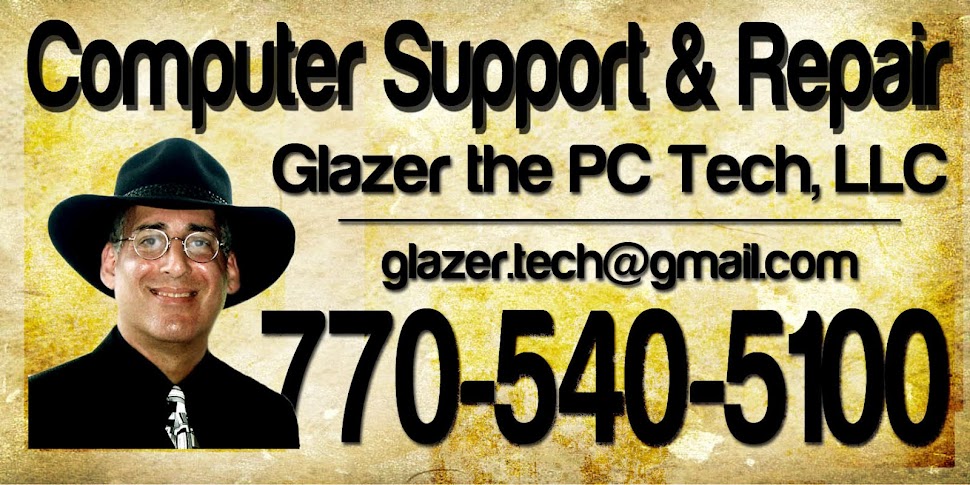Whether you celebrate Christmas, Kwanzaa or Hanukkah, chances are someone in your family is either giving or getting a computer for the holidays. Setting up a new computer, transferring data from an old one or adding new peripherals can be a daunting experience for anyone not comfortable with technology.
Connecting your devices to the computer, if you have a desktop, is easier than it appears. Most cables will connect to only one port; just be sure the plugs are oriented properly. USB plugs can go in any USB port and audio cables are color-coded. The Ethernet or Internet plug is like a phone plug on steroids and will fit in only one port.
If you got a new monitor, it is probably high definition. Use the new cable that came with it and connect it to the corresponding port on the computer. You can use the VGA cable if the new computer has no HD port.
Plug in the power last.
Know where to connect your printer, but don't plug it in yet. Install it through the software on its CD and wait until it says to plug it in.
If using an existing printer, go to the (HP, Lexmark, Epson, Canon) website and download an installation program and driver compatible with your new operating system. The old XP disc that came with your printer will probably not work with Win 7. Also, be sure to choose whether it's 32- or 64-bit.
After you get all the cables and devices connected, Windows 7 will walk you through the initial setup. All you will need to do is name the computer, chose a time zone (Greenwich/GMT minus 5 hours for Eastern/EST) and hit "Next" a few times.
Reboot the computer and customize your settings and your desktop. More important is to be sure you have an anti-virus program installed prior to any Internet browsing.
You may have one that came pre-installed on your new computer, but realize it is a trial version and will be good for only a month. Just because it's there doesn't mean you have to use it. Other programs may be cheaper or more thorough. Be sure to include a malware utility, whether incorporated with the anti-virus or a standalone.
After the above installation is finished, take time to configure it. I find more computers that fail to have a schedule set up for any scans other than a defrag.
The network setup is easier than ever with Win 7. If you have a laptop and need the wireless capabilities of the operating system, it will walk you through it. Windows will detect your network for you. You just need to know what its name is and make sure it is set up with encryption to keep the e-prowlers out.
The next step is to create system emergency discs, usually two. One will boot up the computer in an emergency, the other will have an image of all of your stuff should you experience a techno-disaster.
Look under "Maintenance" in the program menu to find how to create these discs. The first one will require a CD, the second a DVD. If you have lots of programs installed and have transferred old data to the new system, that second disc may turn into multiple discs, depending on how much stuff you have to save.
If you plan to give away your old computer, be certain that no sensitive data remains. Just dragging files to the recycle bin isn't the most secure way to erase your data. Any good hacker could still access your files if they really wanted to.
The truth is, Windows simply deletes the file's name, but the file remains on your drive. Download Eraser, a free open-source utility that writes random data across yours, ensuring nobody could have access to it.
When you install programs to your new computer, add a good utility to help keep it in good shape. Advanced System Care from Iobit is a good one.
If you video conference, don't forget to install Skype if it didn't come on the new computer.
Foxit Reader is a faster pdf file reader than Adoble Reader.
Also, download Google's Chrome or Mozilla's Firefox. Both are better browsers and faster than Microsoft's Internet Explorer, in my opinion.
Let me add one piece of advice about installing programs: Be careful about allowing them in your startup group when running the installation. By default, they all want to go there. This will slow down your system.
So whether you are hanging stockings or lighting candles this weekend, if your gifts come from under a tree or you get one each night, may your computing be happy and may your troubles be slight.
Arthur Glazer is a freelance writer and computer technician in Gainesville. His column appears biweekly on the Business page and on gainesvilletimes.com.
|

On this blog you will find my columns originally published in The Gainesville [GA] Times. They appear every other Saturday on the Business Page in both the hard copy and online editions. Feel free to comment or inquire. If you would like to set up an appointment to have me look at your computer and you live in northeast Georgia, send an email to me at: glazer.tech@gmail.com or call me at 770-540-5100. If you have to leave a message, I will return your call ASAP. Thanks for reading - Arthur
Tuesday, January 3, 2012
Care for your new computer
Subscribe to:
Post Comments (Atom)
No comments:
Post a Comment
Got a Comment - or a quick question...